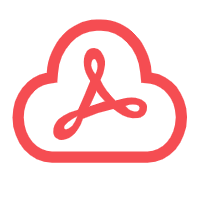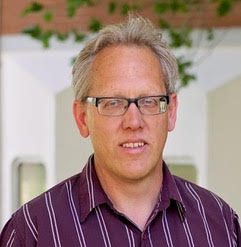Rights-Based Education Programming: A Complimentary Approach for Addressing Poverty, Education Inequality, and Development in Zimbabwe
Article ID: 4770
DOI: https://doi.org/10.30564/jiep.v5i1.4770
Abstract
The United Nations Millennium Development Goals (MDGs) of 2015 sought to eradicate major problems facing the globe. Member states ratifying these goals were tasked to formulate and institute policies aimed at addressing the global economic, political, social, and environmental challenges. Three major goals sought to address fundamental issues on poverty, universal education, and gender equality. The MDGs were succeeded by the Sustainable Development Goals which are targeted to be achieved by 2030. The intersectionality of the development goals and Education cannot be underestimated. Education has been identified as a key strategy for addressing poverty, hunger, and gender equality. Although several countries ratified the MDGs, most did not achieve the goals by 2015. A shift in policy is necessary to close the achievement gap and to help the efforts for achieving the 2030 SDGs. This paper addresses Zimbabwe’s progress towards the SDGs. Progress on key indicators of quality education, poverty, and inequality of opportunities is presented. Finally, the paper suggests a rights-based education programming framework to help accelerate achievement of the SDGs.
Keywords
Full Text:
 PDF
PDF
References
[1] Ali, M.S., & Jalal, H. (2018). Higher Education as a Predictor of Employment: The World of Work Perspective.
[2] Baten, J., de Haas, M.B., Kempter, E., & Meier zu Selhausen, F. (2021). Educational gender inequality in Sub‐Saharan Africa: A long‐term perspective. Population and Development Review.
[3] Bernardi, F., & Plavgo, I. (2019). Education as an equalizer for human development? UNDP Human Development Report.
[4] Burns, B., Crow, M., & Becker, M. (2015). Innovating together: Collaboration as a driving force to improve student success. EDUCAUSE Review
[5] CARE. (2020). Left out and left behind: Ignoring women will prevent us from solving the hunger crisis. CARE International; Geneva, Switzerland
[6] Chidakwa, P., Mabhena, C., Mucherera, B., Chikuni, J., & Mudavanhu, C. (2020). Women’s Vulnerability to Climate Change: Gender-skewed Implications on Agro-based Livelihoods in Rural Zvishavane, Zimbabwe. Indian Journal of Gender Studies, 27(2), 259–281. https://doi.org/10.1177/0971521520910969
[7] Chitiyo, M., Hughes, E.M., Changara, D.M., Chitiyo, G., & Montgomery, K.M. (2017). Special education professional development needs in Zimbabwe. International Journal of Inclusive Education, 21, 48 - 62.
[8] CIA Factbook. (2021). Explore all countries: Zimbabwe. Wshington DC; CIA
[9] Dzimiri, C., Chikunda, P., & Ingwani, V. (2017). Causes of child marriages in Zimbabwe: A case of Mashonaland province in Zimbabwe. International Journal of Management & Social Sciences, 7(1), 73–83.
[10] FAO. (2021). Zimbabwe Humanitarian Response Plan 2021. United Nations: Food and Agricultural Organization
[11] Global Citizenship Commission. (2016). The Universal Declaration of Human Rights in the 21st century: A living document in a changing world. Cambridge, UK: Open Book Publishers
[12] Gordon, R. (1998). “Girls cannot think as boys do": Socializing children through the Zimbabwean school system. Gender and Development, 6(2)
[13] GoZ. (2020). Zimbabwe progress review report of Sustainable Development Goals (SDGs). Harare: Ministry of Public Service, Labor, and Social Welfare
[14] GoZ. (2021). Transitional Stabilization Program Reforms Agenda 2018-2020. Harare, Zimbabwe; Ministry of Public Service, Labor, and Social Welfare
[15] Head, S. K., Zweimueeller, S., Marchena, C., & Hoel., E. (2014). Women’s Lives and Challenges: Equality and Empowerment since 2000. Rockville, Maryland, USA: ICF International
[16] Hove M and Gwiza A (2012) The Fast Track Land Reform Program and Food Security: A case of Zimbabwe from 1992 to present. American Journal of Contemporary Research 2(8), 282-293.
[17] Institute for Sustainable Development. (2021). Gender equality: The formula to accelerate implementation of the 2030 agenda for sustainable development. Winnipeg, Manitoba: International Institute for Sustainable Development
[18] Kanyongo, G. Y. (2005). Zimbabwe’s public education system reforms: Successes and challenges. International Education Journal, 6(1), 65-74.
[19] Kapel, R. (2021). Africa’s employment challenges: The Ever-Widening Gaps. Labour and Social Justice.
[20] Kawewe, S. M., & Dibie, R. (2000). The impact of Economic Structural Adjustment Programs [ESAPs] on women and children: Implications for social welfare in Zimbabwe. The Journal of Sociology & Social Welfare, 27(4)
[21] May, E. K. (2004) Girls’ education in Africa: What do we know about strategies that work? Africa region human development working paper series. Washington, DC: World Bank.
[22] Nel, A., & Mabhena, C. (2021). Echoes From the Rocks: Contextualizing Land Reform and Resettled Farmer Experiences in Matabeleland, Zimbabwe. Journal of Asian and African Studies, 56(4), 818–835. https://doi.org/10.1177/0021909620943630
[23] OECD. (2014). Women in public life: Gender, law, and policy in the Middle East and North Africa. OECD Publishing, Paris, https://doi.org/10.1787/9789264224636-en.
[24] Putnam, R. D. (2001). Social capital: Measurement and consequences. Canadian Journal of Policy Research, 2, 41-51.
[25] Serdeczny, O., Adams, S., Baarsch, F. (2017). Climate change impacts in Sub-Saharan Africa: from physical changes to their social repercussions. Reg Environ Change 17, 1585–1600. https://doi.org/10.1007/s10113-015-0910-2
[26] Techane M.G. (2017). Economic equality and female marginalization in the SDGs era: reflections on economic rights of women in Africa’, Peace Human Rights Governance, 1(3), 333-364.
[27] Tomaševski, Katarina, Manual on Rights-based Education,
[28] UIS. (2018). Data for the sustainable development goals. Montreal, Quebec: UNESCO Institute for Statistics
[29] UNESCO. (2020). A human rights-based approach to education for all.
[30] UNICEF. (2007). A Human Rights-Based Approach to Education for All.
[31] United Nations. (2015). The Millennium Development Goals Report. New York, NY: United Nations
[32] United Nations. (2015). UN Women annual report. New York, NY: United Nations
[33] United Nations. (2020). The Sustainable Development Goals Report. New York, NY: United Nations
[34] United Nations. (2020). Zimbabwe Progress Review Report of Sustainable Development Goals.
[35] UNSCO. (2015). Global citizenship education: topics and learning objectives. Paris, SP: UNESCO
[36] UN Women. (2015). Progress of the world’s women 2015-2016: Transforming economies, realizing rights. Washington, DC: United Nations
[37] UN. (2000). The Dakar framework for action. Education for All: Meeting our collective commitments. Paris, France: UNESCO
[38] USAID. (2020). Gender equality and women’s empowerment: 2020 policy. Washington, DC: USAID.
[39] Wodon, Q., & Alasuutari, H. (2018). The price of exclusion: Disability and education: The challenge of inclusive education in Sub Saharan Africa. Washington, DC: World Bank. https://openknowledge.worldbank.org/han- dle/10986/16391
[40] World Food Program. (2020). The power of gender equality for food security: Closing another gender data gap with a new quantitative measure. Rome: World Food Program.
[41] Zimbabwe Humanitarian Response Plan (2021). Humanitarian Response Plan Zimbabwe. Zimbabwe Government: Ministry of Local Government and Public Works.
[42] Zimbabwe National Statistics Agency (ZIMSTAT). (2019). Zimbabwe Multiple Indicator Cluster Survey 2019, Survey Findings Report. Harare, Zimbabwe: ZIMSTAT and UNICEF.
[43] Zimbabwe National Statistics Agency (ZIMSTAT), 2017 Poverty, Income, Consumption and Expenditure Survey (PICES). Harare, Zimbabwe.
[44] Zimbabwe National Statistics Agency (ZIMSTAT), 2019 Labor Force and Child Labor Survey Report. Harare, Zimbabwe.
Refbacks
- There are currently no refbacks.
 +65 65881289
+65 65881289 contact@bilpublishing.com
contact@bilpublishing.com






